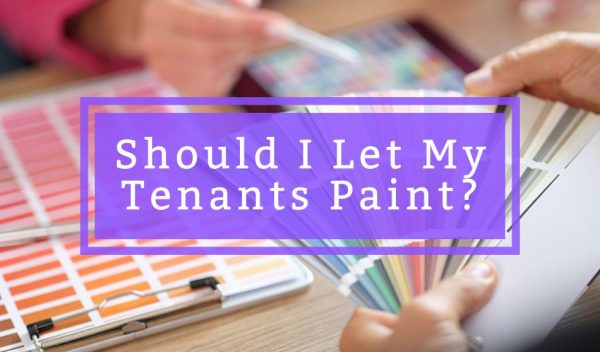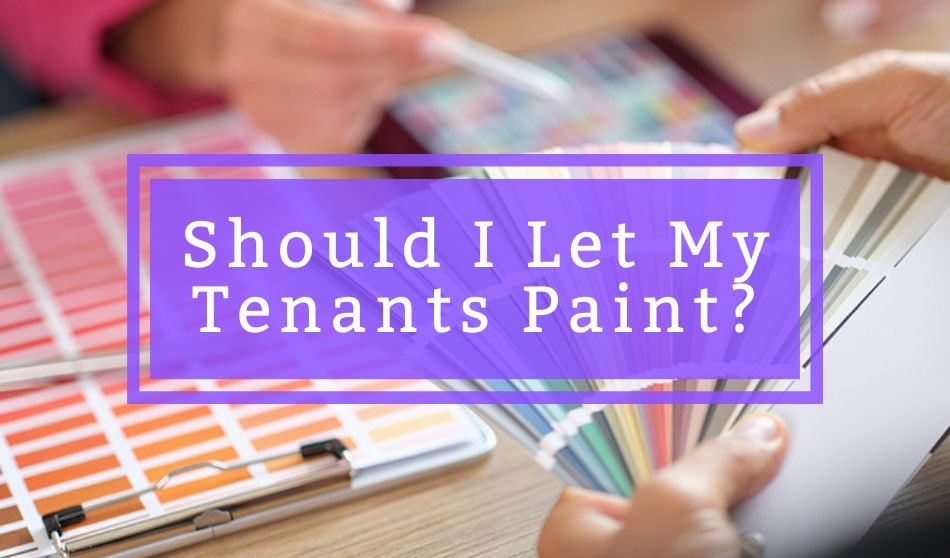
Permission to paint the rental can be a sticking point for many landlords and tenants.
Ensuring your rental property feels like home to your tenants is crucial to ensuring they stay long-term. A welcoming space that tenants can truly make their own is far more likely to generate less turnover. At first glance, it can seem like a no-brainer to let your tenants update the space and decorate how they would prefer. On the other hand, maintaining a property that looks professional and generic enough that a new tenant will feel comfortable one day is also a key consideration for landlords and property owners.
If you’re a landlord wondering if you should let your tenants paint your rental, there are some important factors you should consider.
Potential Downsides to Letting Your Tenants Paint:
While there can be a lot of benefits to letting your tenants paint, there are some significant downsides that can be situationally dependent. Unfortunately, many of these scenarios are a bit of a gamble when you let tenants DIY their painting job. This is why many landlords and property managers opt to set the expectation within the lease agreement that tenants cannot make permanent changes in general including new paint.
More Work at Turnover:
Creating a rent-ready space is already hard enough without the addition of repainting a hard-to-cover color. Tenant turnover can be a very stressful time for a landlord and property manager, especially if turnover occurs during a peak moving season when your bandwidth is already stretched.
Allowing tenants to paint their rental invites more work at the end of turnover if tenants do not do an adequate job repainting and returning it to rent-ready status. Dark colors throughout the unit can make this problem more significant since they will require expertise and multiple coats of paint and primer to fully restore the unit. While these time constraints can be mitigated by hiring professional painters, that is an additional expense that will be accrued.
Risk of Subpar Materials or Skill Sets:
Many renters have never owned their own home and do not have the same sense of ownership with the space that a homeowner might. This may mean that your renters could do a subpar job with their painting–causing damage to the flooring or other areas. New or first-time renters may simply be ignorant to best practices for interior paint. This may mean that tenants will opt for the cheapest paint or a gloss that is not ideal for rentals, resulting in an unprofessional appearance.
Key Benefits to Allowing Your Tenants to Paint:
No doubt, there are a lot of issues that can arise when a tenant paints, but it would be wise to consider the benefits before creating a hard rule in your lease agreement. No matter what you decide, be sure that your lease agreement expressly outlines your policy.
Stand Out from the Competition
Many landlords and property managers are unwilling to deal with the potential downsides of a tenant painting the property; the majority of lease agreements have a no-painting policy. If you are a landlord or manager in a competitive market, allowing tenants to personalize their space can be a great incentive for applicants. This can help you stand out from the competition without a costly up-front investment like other incentives or rent concessions.
Increase Retention
Turnover is expensive and time-consuming. While repainting can take extra time and money, reducing turnover may be a bigger financial win. Ensuring your tenants feel at home can go a long way to keeping them year after year–this is especially beneficial if you have good tenants. The key to your financial success as a landlord is keeping your rule-abiding tenants long-term, and some landlords feel that allowing tenants to customize the interior of the property is an easy trade-off if it can increase retention.
Learn more: The Real Cost of Tenant Turnover
Painting Compromises for Landlords and Property Managers:
The question of whether you should allow your tenants to paint the rental can feel like a question with a black-and-white answer. However, there are a few creative compromises that can be made if you are willing to think outside the box. A good compromise can mitigate the cost of restoring the rental after the lease term while simultaneously ensuring the renter feels as comfortable as possible during their tenancy.
Offer Damage-Free Decorating Tips:
A little empathy can go a long way to ensuring your tenants feel heard. If you are not willing to entertain the possibility of allowing your tenants to make any long-term alterations, you can certainly compromise by offering ways to guarantee they feel at home without damaging the rental or making permanent changes.
Learn more: The Dos and Don’ts of Decorating Your Rental Home
Charge a Repainting Fee:
Time is money–especially when it comes to vacancies and turnover. Offset the financial cost and time investment of needing to restore the property to its original condition by charging a repainting fee. Allowing your tenants to paint, charge a repainting fee, and hire a professional painter to take care of the job when your tenants move out. As long as your local and state laws allow this fee and your tenants agree to the terms beforehand, it can make everyone happy at the end of the day.
Allow Tenants to Pick From Options at Move-In:
If you intend to repaint yourself or have the units repainted at turnover, consider offering your new tenants the option to choose the new paint color at move-in. This ensures that the painting job is one that you are happy with while also offering a bit more personalization to your tenant. Give your tenants full control by allowing them to peruse the local hardware store and select their favorite swatch or retain some input by providing swatches from a preselected list.
This can give your new renters a warm welcome while keeping the property looking professional and cohesive. It can also make coordination easy with painting professionals who may have specific brands and styles they exclusively utilize. Even if your selections offer a minimal range, tenants will likely appreciate the thought. Offering tenants the opportunity to pick between pure white, light gray, and a creamy oatmeal hue may be just what your tenants need to feel more invested in their rental experience.
Give Tenants a Renewal Incentive:
Keeping great tenants is crucial, and offering renewal incentives can sweeten the deal for a tenant who is considering moving to a new property. Landlords and managers can offer tenants the opportunity to personalize their space after the first year of tenancy. This can be done with varying levels of input from the management team and tenants themselves.
For example, you can:
- Give tenants the ability to paint after one year at the property
- Give the tenants permission to paint one accent wall
- Allow tenants to select a color that you or your team will paint
- Allow tenants to select a color for an accent wall
- Offer a range of pre-approved colors for your tenants to choose for the property or accent wall
This can be a fun way to get your current tenants excited about staying at your rental property. After all, while moving can be stressful, the idea of a fresh space can have its own appeal. Give your tenants that same feeling at lease renewal by offering a way to personalize and revitalize their space.






